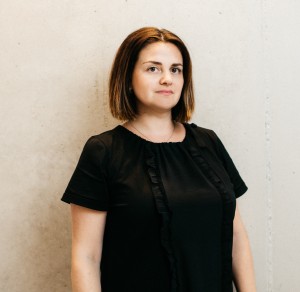
What is astrocytoma?
Astrocytoma is a cerebral tumor originating from the brain tissue support cells. Astrocytomas are about one-third of all gliomas and develop in their middle age.

Are astrocytomas benign or malignant?
The concept of astrocytoma covers a heterogeneous group of cerebral tumors, which are prognostically absolutely different. An astrocytoma can occur at different stages of malignancy (biological nature or malignancy of the tumor). This growth and extension trend can be determined by means of special histological studies of the tumor fragment tissue and then classified depending upon availability of endothelial proliferation, nuclear pleomorphism, necroses, mitoses and other criteria according to WHO's classification for malignancy (up to four degrees) — from benign tumors (degree I) to malignant glioblastoma (degree IV). There are astrocytomas of low malignancy (degree II) and astrocytomas of higher malignancy (degree III), as well as glioblastomas (degree IV) featuring a worse prognosis. The decision as to whether a tumor can be still classified as a tumor of degree II or whether it is a tumor of degree III already (anaplastic astrocytoma) possesses not only forecasting but also therapeutic value (post-surgical treatment). However, molecular and biological markers can determine the tumor type that is more responsive to chemotherapy and radiotherapy and therefore more favorable to treatment within degree III tumors class too.
Why is surgery a first-line treatment for these tumors?
Astrocytomas of degree II are not benign tumors in the strict sense. Although they are classified as low-malignant tumors, tumorous cells can often pass a distance to the other areas of the brain. Astrocytomas of degree II can also regenerate and develop into degree III or IV. This malignant transformation is not unusual, but rather a rule if the tumor has been reported for a very long time. Therefore, we stick to the opinion that even low-malignant astrocytomas should be completely removed using microsurgical means as far as practicable from the standpoint of morphology. It is usually impossible to completely remove the tumor by microscopic means, as almost always some cells of the astrocytoma have already moved along the pathways in the medullary area. Therefore, contrary to another opinion, we believe that even small, asymptomatic astrocytomas need to be resected as far as possible rather than observed for the first time. The new study shows that under successful, the dullest resection of the tumor, the 5-year survival rate in younger patients can make 93 %. However, within the control imaging reviews (MRI), tumor components were detected again in 50 % of patients after 5 years. Here we can also recommend vigorous treatment, i.e. the repeated total operation upon the MRI criteria.
Since the complete removal of the tumor following the imaging criteria (MRI) is very important for the patient's prognosis, but the tumors are often located near the critical areas of the brain, there are special requirements for surgical techniques in many cases.
Navigation, MRI tractography, and present-day planning create a reduced-impact minimal access. Intraoperative imaging and microsurgical technique of the operation are aimed at the eradication of the tumor. Functional MRI (fMRI) and intraoperative complex neuromonitoring of motor evoked potentials as well as sensory potentials, and, if appropriate, also performing surgery when a patient remains conscious, can provide a high standard of safety. Owing to the combination of these methods, it is now possible to resect even large or complex tumors without complications in the form of a patient's motor or speech deficits.
If the tumor is inoperable, a biopsy can be performed to obtain histological characteristics.
For the prognosis, the extent of the surgical oncotomy and pathology report (WHO's degree) are particularly important.
Share:
